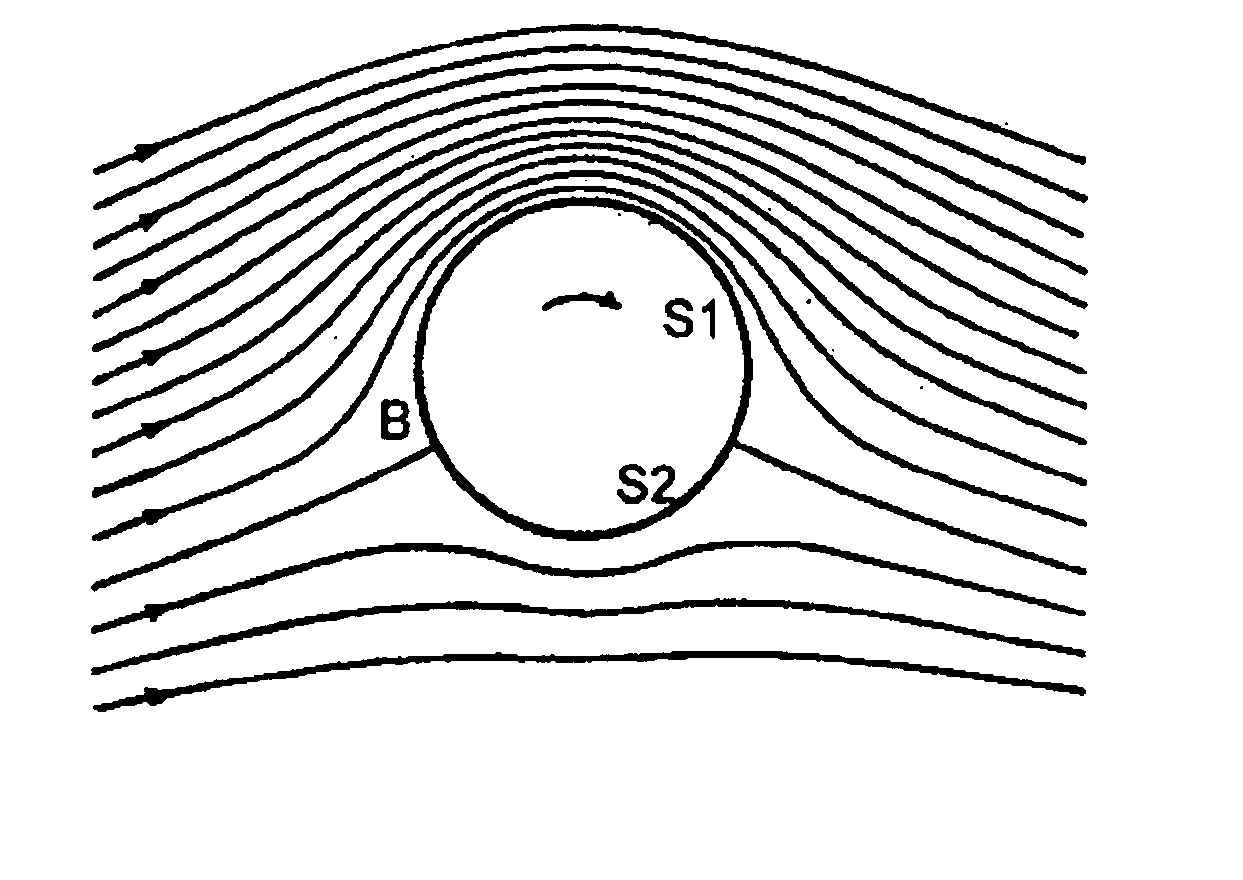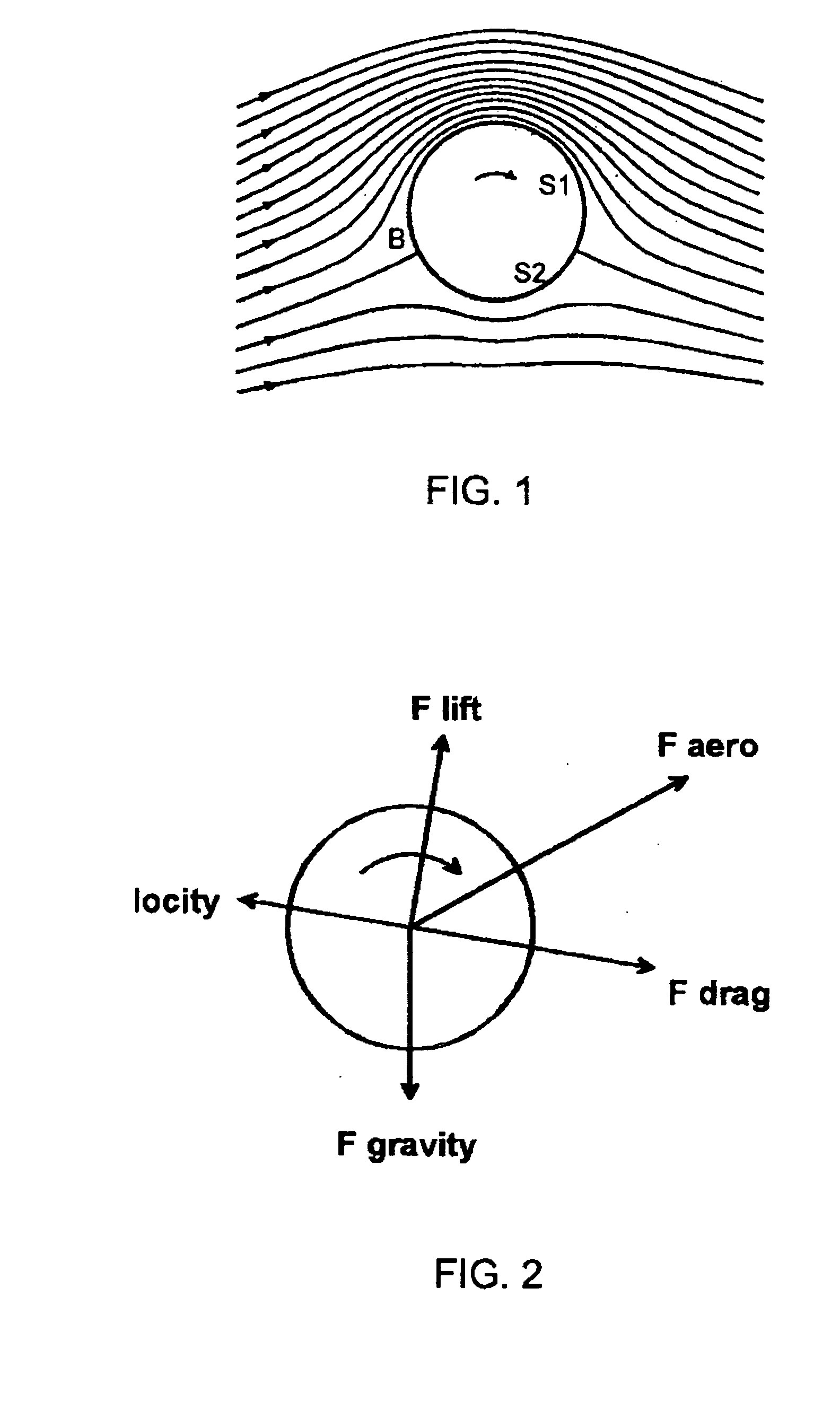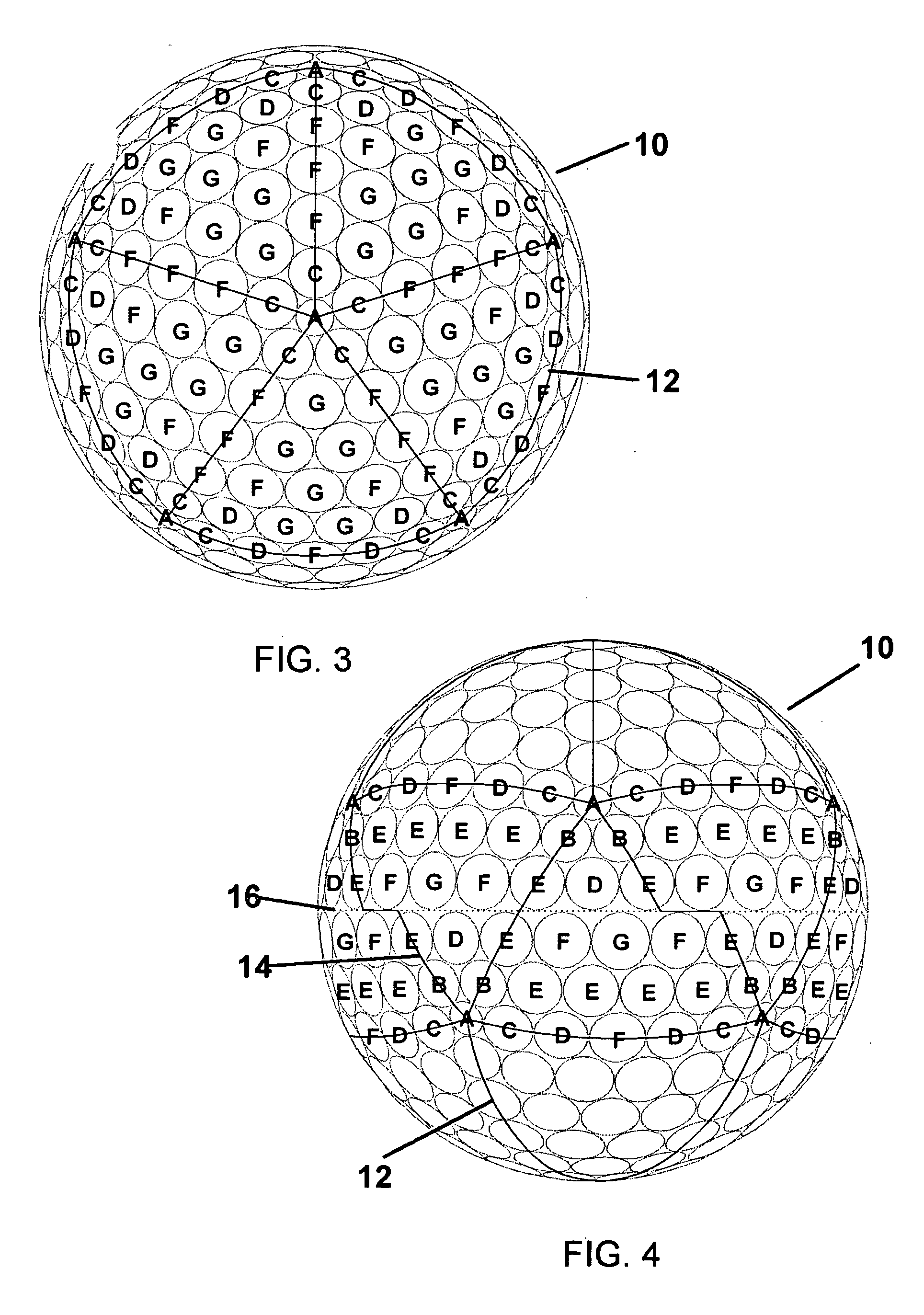Golf ball with improved flight performance
a golf ball and flight performance technology, applied in the field of golf balls, can solve the problems of not having a teaching in the art for a golf ball that is optimal for all ball speeds, most of these factors are outside the control of a golfer, etc., and achieve the effect of improving aerodynamic efficiency and increasing flight distance for golfers
- Summary
- Abstract
- Description
- Claims
- Application Information
AI Technical Summary
Benefits of technology
Problems solved by technology
Method used
Image
Examples
first embodiment
As shown in FIG. 3 and in accordance to the present invention, a golf ball 10 comprises a plurality of dimples arranged in an icosahedron pattern. Generally, an icosahedron pattern comprises twenty triangles with five triangles sharing a common vertex coinciding with each pole, and ten triangles disposed between the two five-triangle polar regions. Other suitable dimple patterns include dodecahedron, octahedron, hexahedron and tetrahedron, among others. The dimple pattern may also be defined at least partially by phyllotaxis-based patterns, such as those described in U.S. Pat. No. 6,338,684.
The first embodiment comprises seven different sized dimples, as shown in Table 1 below:
TABLE 1Dimples and Dimple Pattern of the First EmbodimentNumber ofSurfaceDimpleDiameter (inch)DimplesCoverage %A0.115121.4B0.155204.3C0.160409.1D0.1655012.1E0.1706015.4F0.1758021.8G0.1807020.1Total33284.2%
These dimples form twenty triangles 12, with the smallest dimples A occupying the vertices and the lar...
second embodiment
Similarly, ball 20 can be modified to include an equator or parting line on its surface. The icosahedron pattern is modified around the midsection to create a great circle that does not intersect any dimple. The dimple arrangement shown in FIG. 5 then illustrates the polar regions of this modification, and the dimple arrangement shown in FIG. 6 illustrates the equatorial region. The dimple population and surface coverage shown in Table 2 illustrate the dimple arrangement of the modified second embodiment shown in FIGS. 5 and 6. This embodiment comprises only 252 dimples having six different sizes.
As shown in FIG. 6, ball 20 comprises ten modified triangles 24 disposed around parting line or equator 26. As shown, each triangle 24 is defined to have smallest dimples A at the vertices, and unlike triangles 14 each triangle 24 does not have an irregular side. The sizes and positions of the dimples are adjusted so that parting line 26 may pass through triangles 24 without intersecting a...
PUM
 Login to View More
Login to View More Abstract
Description
Claims
Application Information
 Login to View More
Login to View More - R&D
- Intellectual Property
- Life Sciences
- Materials
- Tech Scout
- Unparalleled Data Quality
- Higher Quality Content
- 60% Fewer Hallucinations
Browse by: Latest US Patents, China's latest patents, Technical Efficacy Thesaurus, Application Domain, Technology Topic, Popular Technical Reports.
© 2025 PatSnap. All rights reserved.Legal|Privacy policy|Modern Slavery Act Transparency Statement|Sitemap|About US| Contact US: help@patsnap.com



